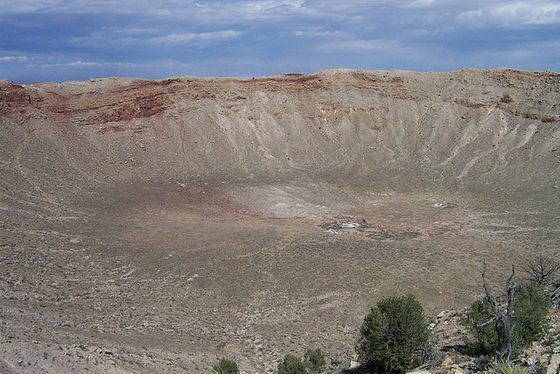A new study on meteorites that caused "Tunguska explosion"

ByJohn Fowler
On June 30, 1908, occurred in the upper Tunuska River in central Siberia "Tungusuka explosionAlthough the views of many researchers are in agreement in that meteorites or comets were used, but there is still a mystery about why such a big explosion occurred. In this regard, researchers at the Tucson Planetary Science Institute have published new research results.
From Tunguska to Chelyabinsk via Jupiter - Annual Review of Earth and Planetary Sciences, 44 (1): 37
http://www.annualreviews.org/doi/abs/10.1146/annurev-earth-060115-012218

BBC - Earth - In Siberia in 1908, a huge explosion came out of nowhere
http://www.bbc.com/earth/story/20160706-in-siberia-in-1908-a-huge-explosion-came-out-of-nowhere
Thesis is Tucson Planetary Science Institute'sNatalia ArtemievaIt is attributed to Dr. and is published in "Earth and Planetary Sciences" No. 44.
"Tungusuka explosion" occurred in Siberia in 1908 between the Russo-Japanese War and the First World War. It is very famous that about 80 million trees were knocked over about 2,000 square kilometers around the hypocenter. By the way, this area is comparable to Tokyo.

Fortunately, it seems that there were no victims because it was a place where no one lives, but even in Irkutsk, 1,500 km from the explosion site, there was an earthquake due to the impact, and the mushroom clouds that stood up could be confirmed even hundreds of kilometers ahead.
The first field survey was conducted in 1921 when the First World War ended and the results of the Russian Revolution and the subsequent Russian civil war were settled down. The mineralogist Leonid Kulick, who was in charge of the survey, conducted field surveys four times after this.
Even though 20 years have passed since the explosion, the locality still seems to clearly show the state of the blast during the explosion, and it seems that the form like a butterfly spreading over 50 kilometers called "tungusuka · butterfly".
Because Coulick could not find a piece of meteorite in the field survey and there was no crater, "Tungusuka explosion" thought that a comet came from outside the atmosphere could have exploded in the atmosphere. Minerals remain in the case of "meteorite", whereas in the case of "comet" it is ice, it evaporates when it explodes.
This is a crater in Arizona

ByDeborah Lee Soltesz
However, because there was no evidence, research on the cause of the explosion continued for decades, and occasionally the science fiction writer sometimes commented on the theme demo that "there was an explosion of nuclear weapons". The nuclear explosion theory is denied because radiation was not detected in the field survey.
The cause of the explosion was identified as a meteorite in 2013, a research team led by Ukrainian Academy of Sciences Academy of Sciences Victor Kvasnytsya discovered meteorite derived minerals from rock samples collected in 1978. This sample is found in the peat layer in 1908. By this we have come to the point that "a meteorite with a diameter of 50 to 100 meters has caused a 5 mega-ton explosion in the atmosphere".
Dr. Artemieva's new announcement is information on this meteorite. Normally, after meteorite rushes into the atmosphere, it breaks apart a few kilometers from the surface of the earth and becomes small fragments and it cools down until it reaches the surface of the earth.
However, the meteorite that caused the explosion of Tunguska rushes into the atmosphere at a speed of 15 km to 30 km per second. Originally fragile material seems to be, it is thought that explosion almost disappeared at 8 km to 10 km from the surface of the earth. At this time, the fine piece evaporates, and the existing kinetic energy is converted into heat, and a thing similar to the chemical explosion process occurs. The shock wave caused the tree to be knocked down and a strong ascending air current created a mushroom cloud that can be observed from hundreds of kilometers away.
Therefore, Dr. Artemieva says that it is difficult to find a small meteorite out of a vast area, but it is necessary to find a piece of meteorite in the peat layer.
By the way, it is thought that meteorites causing this situation like a massive explosion of Tunguska once occurred once in 1000 years, and it is about once in 100 years that meteorites of about tens of meters in size are coming down Although it was, in February 2013A meteorite of about 20 m in diameter falls in Chelyabinsk, RussiaAn incident occurred. This meteorite size of Chelyabinsk was corrected as being able to happen up to ten times that it was thought so far, and the meteorite of Tunguska class was corrected once every 100 years to 200 years.
Although it is still the cause of "Tungusuka explosion" which can not be said to be "comet at the moment" at the moment, the place where the same kind of explosion will occur next time is not limited to places where there are no households, so also for the future Further research is required.
Related Posts:
in Science, Posted by logc_nt







